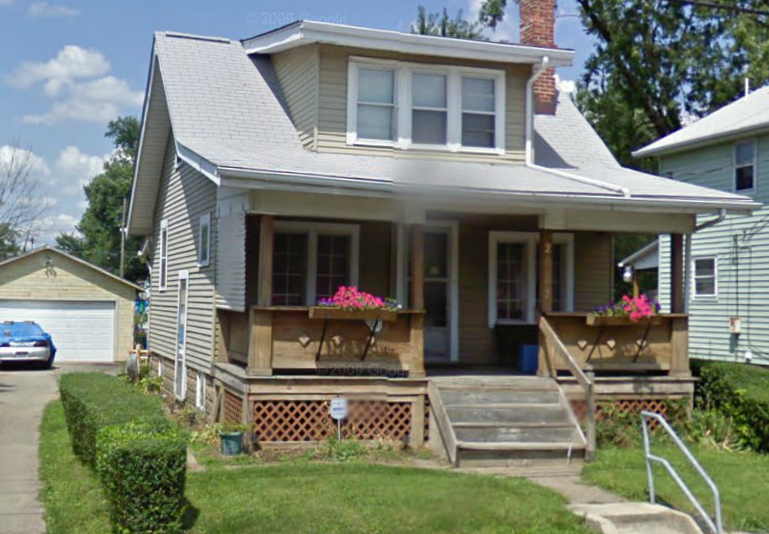Know Your “Cap Rate”
Post on: 18 Июнь, 2015 No Comment

While mortgage interest rates are on the rise again, putting steady pressure on the affordability of homes, there is a significant silver lining from the property buyer’s perspective: Rents have reached an all-time high as well. This is crucial because high rents, more than any other indicator, place a sturdy floor under real estate investments. Indeed, because rental income directly represents the cash flow coming from real estate investments (disregarding expenses), a pricey market for renters, plus downward pressure on prices, equals an ideal environment for new property investors.
Why? Let’s take a look at a key component of real estate investing – what we call the capitalization rate, or “cap rate” on a given property. Here’s how it works:
The cap rate on a given piece of property is the net operating income divided by the purchase price.
So if you were inclined to rent a property out, as opposed to flipping it, and you think you can rent a property for $1,500 per month over and above your monthly insurance, management, repair and maintenance expenses, a $300,000 cash purchase price would generate a cap rate of 5 percent at current rent levels.
Keep in mind that the cap rate is a factor of net operating income. or NOI. That’s another important concept to grasp. In the real estate business, your net operating income is the total cash you receive from renters, minus your expenses. But you do not subtract financing costs (interest and closing costs), and you do not include depreciation deductions in NOI.
Another way of looking at the same problem is this: How long will it take for the income to completely pay for the purchase of the property? When is the breakeven point, or how long is the payback period?
Well, in our example above, assuming there’s never a rent increase, and assuming there’s no leverage involved, the payback period on a property with a 5 percent cap rate is 20 years, or 100 / 5 percent.
What’s a competitive cap rate? It’s different for every investor, of course, because every investor’s risk tolerance is different. Every market is different, too. We saw this in spades in the 2000s, when the U.S. residential bifurcated: It was nearly impossible to find a cash-flow positive property along the coasts during the boom. Investors weren’t buying income, but the hope of future appreciation. On the other hand, there were still income-producing properties to be had throughout most of the heartland.
A recent JP Morgan research report pegged unleveraged cap rates at between 6.5 and 7.5 percent, as long as interest rates remain roughly stable around 4.5 to 5 percent. This seems like a reasonable target: It runs roughly twice the income returns available on residential REITs right now, which is significant, but you need to compensate investors for the risk of investing in a single unmanaged property rather than in a portfolio of managed ones. It’s also a nice margin above the current returns available to safe money.
Working backwards from the formula above, to arrive at a rough market price, based on the cap rate, you would solve for cost:
Annual net operating income / cap rate = price
In other words, an annual net operating income of $1,000 per month, divided by a 7 percent cap rate, comes out to $171,428.57.
$1,000 x 12 months / 0.07 = $171,428.57
That’s a very simplified example, because there are other factors to consider:
- What is the opportunity cost? For example, you may be earning 2 percent in a money market account, with no risk. In which case, your net gain in the real estate project above, assuming no leverage involved, is 3 percent. In reality, the opportunity cost can be considered the absolute zero of desired rates of return. You wouldn’t move money into an investment that you expect will make less than you’re making now, unless you’re compensated in the form of much less risk. If you’re making 2 percent in a money market with essentially no risk – the risk-free rate of return you aren’t going to move your money out of that at all unless you can get a higher return!

- Cap rates change over time, because rents change over time. If the rent on a $1 million property doubles from $100,000 per year to $200,000 per year, for example, the cap rate also doubles, from 10 to 20 percent (and the breakeven period calculated on that cap rate falls from 10 years to five).
- The cap rate to the seller is going to be different than the cap rate to a new buyer, because they pay different costs. You probably wouldn’t sell a building that nets $100,000 per year at the same price as one that nets $200,000 per year!
- What is the cash-on-cash return, or return on investment (ROI)? For example, the 5 percent cap rate above doesn’t include the effects of leverage, and it doesn’t include the effects of depreciation – which adds significantly to the after-tax monthly cash flow of rental properties.
- To calculate the cash-on-cash return, you have to calculate a property’s cash flow. To do so, you start with net operating income (NOI), and subtract interest paid. Smart investors will also subtract a maintenance reserve contribution as well.
Sure, I can hear you saying: “I’m not a renter. I want to flip properties! Why would I need to know this stuff?”
Here’s why: Understanding the cap rate is a big part of deciding what the full value of the home is. It’s also an important window into how other property investors who concentrate on rental properties think.
Whether they realize it or not, rental investors have a “target capitalization rate” in mind. That is, they need the property to yield income sufficient to cover their costs, plus provide some steady cash flow in the relatively near future. That target rate is going to be somewhere north of the risk-free rate of return – which is what they can get for a lot less hassle and essentially no risk just by buying a CD or money market!
Their target cap rate is also probably going to be higher than what they could earn by buying a fixed annuity, or a portfolio of investment grade bonds, since they can also earn this return without a lot of hassle and little risk if they hold the bonds to maturity. There would be price volatility with bonds, of course: When interest rates rise, bond prices fall. But with most bonds, the income doesn’t change until the bond matures and principal is returned to the investor. The bond buyer receives the scheduled interest payments regardless of changes in interest rates, in most cases (unless the bond issuer defaults).
We’ll be taking a closer look at valuation theory – and the different ways to approach hanging a price on a house or any other investment – in future columns. Stay tuned!














